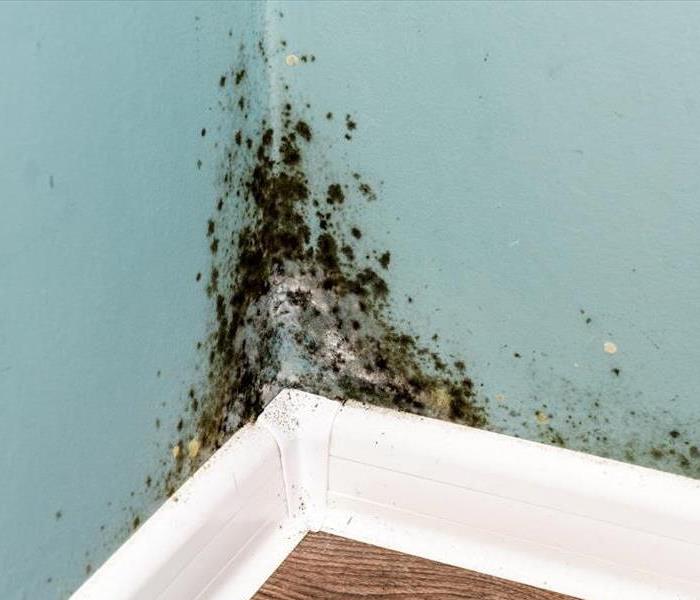Understanding & Combating Mold
11/28/2022 (Permalink)
What is Mold?
Molds are various types of fungi (singular = fungus) that grow in filaments and reproduce by forming spores that can travel through the air. The term mildew is sometimes used to refer to some kinds of mold, particularly mold in the home with a white or grayish color, or mold growing in shower stalls and bathrooms. Mold may grow indoors or outdoors and thrives in damp, warm, and humid environments. Mold can be found in essentially any environment or season.
The most common types of household mold that are found indoors include Cladosporium, Penicillium, Alternaria, and Aspergillus. Stachybotrys chartarum (also known as Stachybotrys atra and sometimes referred to as "black mold") is a greenish-black mold that can also be found indoors, although it is less common than the other types of mold found in homes. Stachybotrys grows on household surfaces that have high cellulose content, such as wood, fiberboard, gypsum board, paper, dust, and lint. There are types of mold that can grow on substances as different as foods and carpet.
Molds reproduce by forming tiny spores that are not visible to the naked eye. Mold spores are very hardy and can survive under conditions in which mold cannot grow, such as in dry and harsh environments. These spores travel through outdoor and indoor air. When the mold spores in the air land on a surface where moisture is present, mold can then start to grow.
Outdoors, molds play a role in the decomposition of organic material such as dead trees, compost, and leaves. They are most common in damp, dark areas or areas of decomposing plant life. Indoors, mold is often found in basements or shower stalls. Indoor mold in residential areas has the potential to cause health problems and can destroy surfaces and objects where it grows.
You Can Control Mold
Inside your home you can control mold growth by:
- Controlling humidity levels;
- Promptly fixing leaky roofs, windows, and pipes;
- Thoroughly cleaning and drying after flooding;
- Ventilating shower, laundry, and cooking areas.
Mold growth, which often looks like spots, can be many different colors, and can smell musty. If you can see or smell mold, a health risk may be present. No matter what type of mold is present, you should remove it. Since the effect of mold on people can vary greatly, either because of the amount or type of mold, you can not rely on sampling and culturing to know your health risk. The best practice is to remove the mold and work to prevent future growth.
MOLD PREVENTION TIPS
Keep humidity levels as low as you can—no higher than 50%–all day long. An air conditioner or dehumidifier will help you keep the level low. Bear in mind that humidity levels change over the course of a day with changes in the moisture in the air and the air temperature, so you will need to check the humidity levels more than once a day.
Be sure your home has enough ventilation. Use exhaust fans, which vent outside your home, in the kitchen and bathroom. Make sure your clothes dryer vents outside your home.
Fix any leaks in your home’s roof, walls, or plumbing so mold does not have moisture to grow.
Clean up and dry out your home thoroughly and quickly (within 24–48 hours) after flooding.
Add mold inhibitors to paints before painting.
Clean bathrooms with mold-killing products.
Remove or replace carpets and upholstery that have been soaked and cannot be dried promptly. Consider not using carpet in rooms or areas like bathrooms or basements that may have a lot of moisture.
If you are in need of mold remediation services, call the pros at SERVPRO of Parma/Seven Hills!

 24/7 Emergency Service
24/7 Emergency Service
